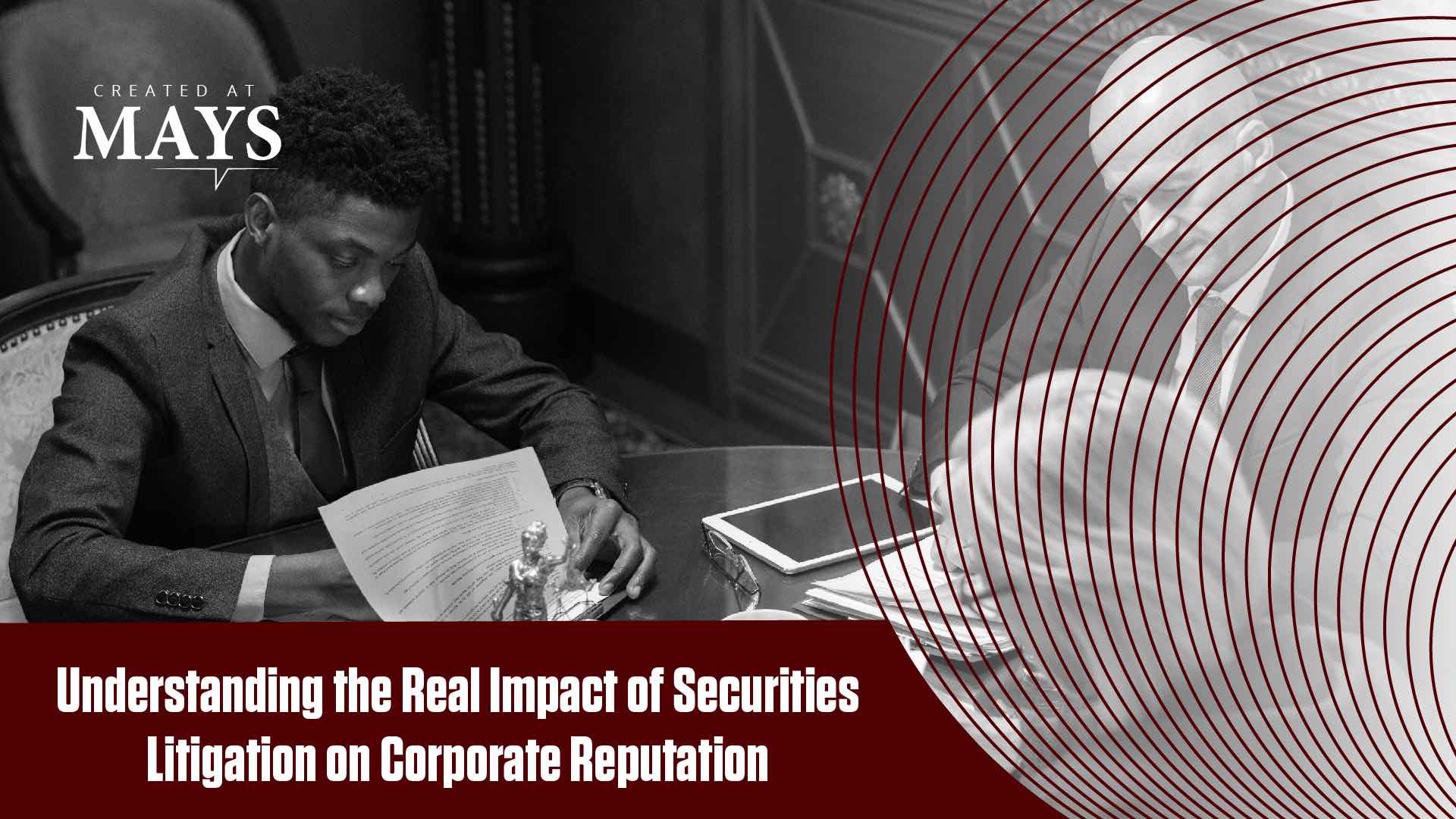Understanding the Real Impact of Securities Litigation on Corporate Reputation
June 12, 2024
|
Antonis Kartapanis & Chris Yust
In the high-stakes world of corporate finance, the shadow of securities litigation looms large. A recent study by Professors Antonis Kartapanis and Christopher Yust from Mays Business School sheds new light on how these legal battles impact corporate reputation, a concern that keeps many executives up at night.
The Nuanced Relationship Between Litigation and Reputation
Contrary to common belief, not all securities litigation is detrimental to a company’s reputation. The study, utilizing Fortune’s “Most Admired Companies” list as a direct measure of corporate reputation, reveals a more nuanced reality. It’s the nature of the litigation – meritorious or nonmeritorious – that determines its impact on a firm’s standing.
Key Findings: A Clear Distinction in Litigation Outcomes
The study’s findings are groundbreaking:
- Meritorious Litigation and Reputation Damage: It’s the meritorious litigation, cases where fraud is reasonably inferred, that causes significant reputational harm. These are the cases that settle for substantial amounts, signaling serious wrongdoing to the market.
- Nonmeritorious Litigation: No Lasting Stigma: Interestingly, more than 70% of securities class actions, which are nonmeritorious and often dismissed or settled for nuisance amounts, show no lasting impact on corporate reputation.
- Litigation as a Revealer of Fraud: The study argues that reputational damage is primarily a consequence of fraud exposed by the litigation, rather than the litigation itself. This is a critical distinction, shifting the focus from the legal process to the underlying corporate misconduct.
Reputation Measurement: A More Accurate Lens
Traditional methods of gauging reputational damage often rely on indirect measures like market returns or total market losses. These can be misleading, as they are intrinsically linked to elements of the litigation itself. The use of Fortune’s “Most Admired Companies” list, based on surveys of market-savvy participants, offers a more direct and reliable measure of reputation in the context of litigation.
Managerial Implications: Rethinking Litigation Strategy
The implications of these findings for business leaders are significant:
- Redefining Litigation Concerns: Managers can take solace in the fact that nonmeritorious litigation, a majority of cases, does not tarnish their company’s reputation. This insight can inform their litigation and settlement strategies.
- Quick Settlements for Nonmeritorious Cases: Given the minimal reputational risk, managers might opt for quicker, less costly settlements in cases likely to be deemed nonmeritorious.
- Focus on Fraud Prevention: Since fraud is the real reputational risk, companies should prioritize ethical practices and robust internal controls to prevent fraudulent activities.
Policy Implications: Streamlining the Legal Process
For policymakers, these findings offer a fresh perspective. The push for adding procedural barriers to discourage nonmeritorious litigation should not be justified on the grounds of preventing reputational damage. Instead, the focus should be on the efficient allocation of judicial resources. This study suggests that the fear of reputational harm should not be a driving factor in shaping securities litigation policy.
Research Implications: A New Direction
For the academic community, this study paves the way for a more precise understanding of reputational damage. Researchers are encouraged to utilize more direct measures of reputation where possible, especially when investigating the impacts of litigation. This approach can offer clearer insights into the consequences of corporate actions and legal challenges.
Closing Thoughts: A Balanced View of Litigation’s Impact
This groundbreaking research presents a more balanced view of the relationship between securities litigation and corporate reputation. It highlights that the real reputational damage stems from corporate misconduct, not the litigation process itself. For business leaders, this understanding is crucial in guiding their responses to legal challenges and in shaping their broader corporate strategy.
The findings also serve as a reminder that in the court of public opinion, as in the court of law, the nature of the accusation matters as much as the accusation itself. In the realm of corporate finance, where reputation is a valuable asset, this research offers a nuanced understanding of how legal actions interact with public perception, enabling more informed decision-making at the highest levels of business leadership.




